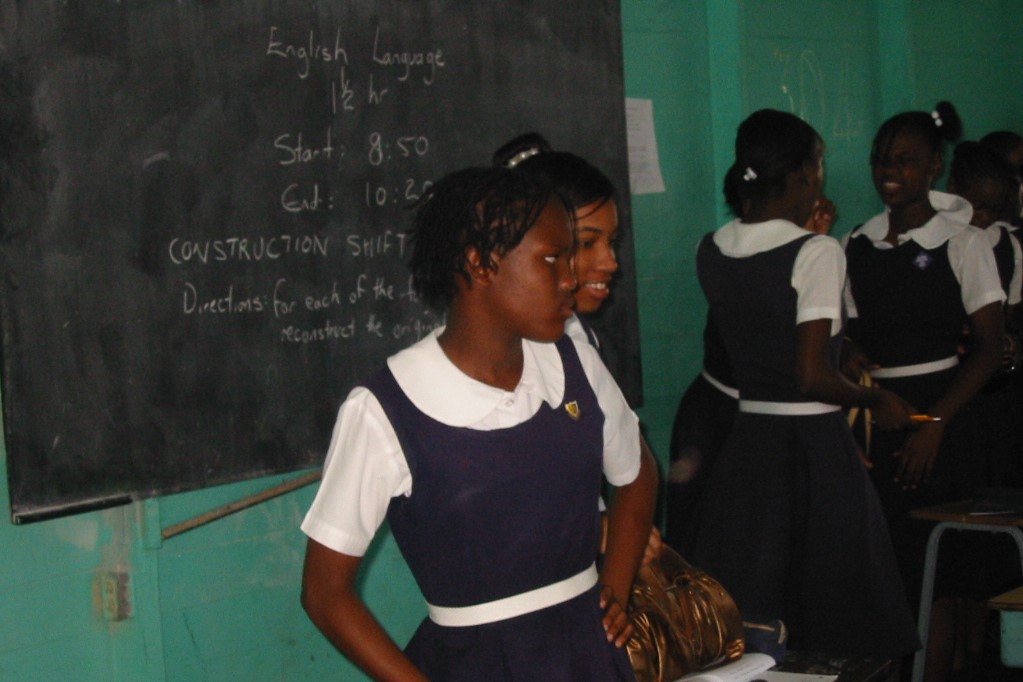Blog: The rise of the double burden of child malnutrition in Jamaica
Henrice Altink explains how changes in the global economy and conditions affect child malnutrition in Jamaica and also contributes to a rise in childhood obesity.

When Jamaica became independent in 1962, malnutrition was a leading cause of death for children under the age of one. As a result of concerted efforts by the Government of Jamaica with support from international lenders and aid agencies, child malnutrition rates rapidly declined from the late 1960s onwards. By the 1990s, however, another child nutrition problem began to emerge: obesity. Today some 25.6 percent of 13-to-15-year-olds in Jamaica are overweight, and 10.1 obese. Yet there are also 3.6 percent of 13-to-15 year olds that are underweight. This coexistence of underweight and obesity is generally referred to as the ‘double burden of malnutrition’. In my article, I examine the gradual decline in child malnutrition and the rise of the double burden of malnutrition in Jamaica from independence to the present, using a wide range of historical sources, including public documents, newspaper reports, scientific studies and reports by international aid agencies.
My research shows that changes in the global economy and conditions imposed by international lenders significantly affected the Jamaican government’s ability to lower child malnutrition levels and also contributed to a rise in childhood obesity. From the late 1970s onwards, international lenders made demands, including cuts in public spending and devaluation of the Jamaican dollar, which negatively affected the nutritional status of poor children as they led, amongst others, to a decline in nutrition clinics and hikes in food prices which enhanced household food insecurity. But it also shows that without international lenders and aid agencies, the government would not have been able to significantly reduce child malnutrition levels. For example, without support from USAID and other aid agencies, it would not have been able to continue the school feeding programme, which for decades now has been an important lifeline for many poor children.
International loans also largely account for the rise in childhood obesity from the 1990s onwards. Firstly, loans stimulated economic growth. Between 1985 and 1993, for instance, per capita income increased by some 3 per cent per annum. Although income was not equally distributed, this rise did mean that many Jamaicans from the 1980s onwards were able to spend more money on non-essential items and they increasingly started to replace basic staple commodities with imported energy-dense, processed foods. Second, the loans came with conditions that required trade liberalism. A reduction in trade restrictions increased the availability of imported, high-energy processed food, making it, for instance, easier for multinational fast-food chains to set up branches. In 1985, for example, the first branch of Burger King was opened in Jamaica and today there are some eighteen outlets on the island. Also, Foreign Direct Investment in the island, as encouraged by the lenders, has been particularly pronounced in the telecommunications sector, allowing for the wide advertising of (mostly imported), unhealthy foods.
The article shows that the approach to child malnutrition in post-independence Jamaica shifted from a medicalised approach, focussing on the treatment of severe cases, to a more holistic approach that combined treatment with prevention, and which paid attention to cultural beliefs and values, involved multiple sectors, and used lay health workers. Nonetheless, it was a traditional deficit-led approach, with a public waiting to be instructed about malnutrition and interventions based on a predefined and top-down notion on what constituted well-nourished children. Breastfeeding campaigns in the 1990s, for instance, were based on WHO guidelines but did not include consultation with the target audience.
Hinchliffe at al. (2018, 6) proposed a shift away from a top-down imposition of what it means to be healthy towards the creation of ‘healthy publics’ that bring together specialist and lay groups with different ideas and practices, to ‘co-identify questions and approaches that are relevant to all those affected by the issues; and to generate appropriate forms of evidence that can allow this health and wellbeing knowledge to circulate, gain traction, and contribute towards effective health-care practices and policies’. In the article, I argue that such an approach holds out greater promises to address the increasing double burden of child malnutrition in Jamaica, as this problem is far more complex than conventionally understood child malnutrition. Yet I do question how easy it is for Caribbean Small Island Developing States such as Jamaica to create ‘healthy publics’ to tackle the double burden of child malnutrition. These are small economies, heavily reliant on external markets for both exports and imports, and thus extremely vulnerable to external shocks that can significantly affect the nutritional status of their populations. And they are also patronage democracies. For ‘healthy publics’ to emerge in these countries, there needs to be a shift towards a more inclusive democratic governance process.
Read the full article: Tackling child malnutrition in Jamaica, 1962–2020
Contact us
Interdisciplinary Global Development Centre
igdc@york.ac.uk
01904 323716
Department of Politics and International Relations, University of York, Heslington, York, YO10 5DD, UK
Twitter
Contact us
Interdisciplinary Global Development Centre
igdc@york.ac.uk
01904 323716
Department of Politics and International Relations, University of York, Heslington, York, YO10 5DD, UK
Twitter